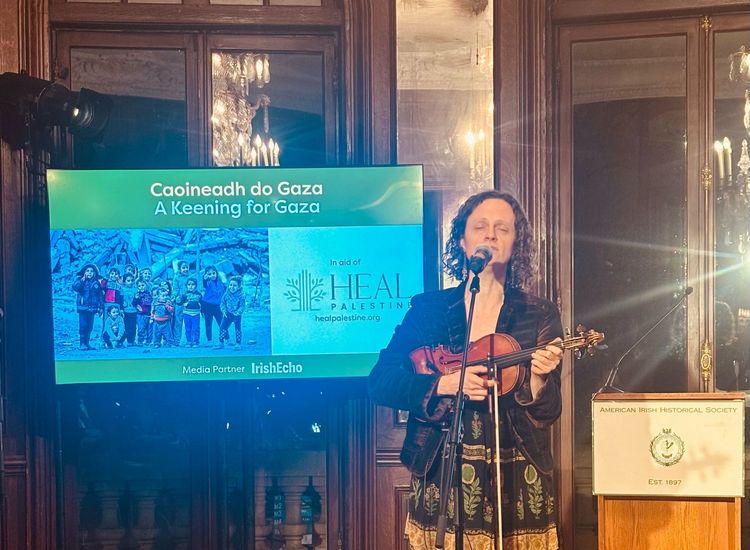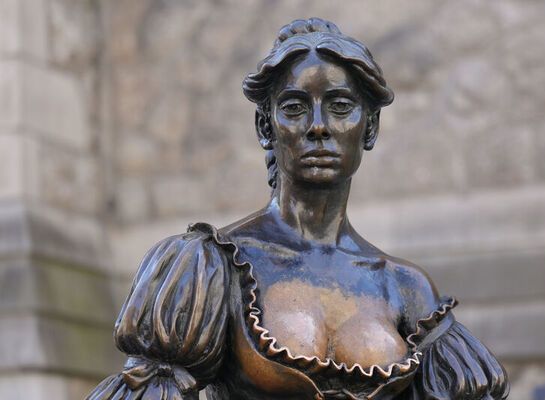By Máirtín Ó Muilleoir
Hilo, Hi. - A hearty céad mile fáilte wasn't what the Irish Echo was expecting at the Hawaiian language department of the University of Hawaii but then it's not every day that lecturer Keola Donaghy gets to practice his Irish.
A polymath who hails from Philadelphia, Keola - bar the fluency in Hawaiian - is direct from central casting at Irish America: big guy, big smile and firm handshake.
"Tá fáilte romhat, is mise Keola," he says ("You're welcome, I'm Keola") before reminding his visitors of his Irish Echo connection: he made the front page in 2007 after Irish customs officials controversially deported him as he entered the country to study at Cork University.
Since then, Donaghy, who was baptized Joseph, has completed a doctorate in New Zealand and gone on to excel as a teacher of Hawaiian. "I wanted to study in Ireland because I had attended an Irish language intensive course at Oideas Gael in Donegal in 2002 and it had really opened my eyes to my Irish ancestry and heritage," he says. "I hadn't left Hawaii from the age of 10 until I was 25 and didn't have much curiosity about my Irish background though I knew my ancestors had come from Ireland - or at least three quarters of them had - hundreds of years ago. My visit to Donegal changed all that and I really looked forward to returning but the customs people had other plans."
Although, questions were raised about his case in the Dáil, he never received any apology and officials appointed to carry out an inquiry did so without speaking to him.
Of course, all this was pre-Farmleigh and the new-found appreciation of the role of the diaspora among the great and the good in Ireland.
Moving from Philadelphia to Hawaii at the age of 10, the young Donaghy developed an intense interest in Hawaiian song, which in turn led him to language classes. Soon after, he volunteered to take a beginners' class in his local Hawaiian immersion school and then found himself delving deeper into the language to keep ahead of his pupils. Today, he's a respected lecturer at the College of Hawaiian Language at the University of Hawaii's Hilo, Big Island, Campus. And his Irish ain't bad either.
However, he's not the only member of the faculty who can boast of Irish roots.
Professor Kalena Silva, director of the College and a native Hawaiian, also has Irish blood. One of his forebears was a McCandless, Scots-Irish who came to Hawaii from West Virginia in the mid-19th century and whose extensive ranches continue to leave their mark on the archipelago.
Today, Professor Silva is one of 10,000 speakers of Hawaiian from a native population of 250,000 on the islands (from a total population of 1.2 million) and a leading proponent of efforts to restore the language's fortunes. In the mid-70s, what was once the official language of the nation-state of Hawaii - overthrown by US businessmen in 1893 - was at death's door. "Only 35 people under 30 spoke Hawaiian by 1973," he says. "Today, of the 10,000 native speakers, the majority are under 30."
Kick-starting the language revival - and today Hawaii is the only state in the Union which has an official language as well as English - was the civil rights fervor sweeping the globe in the sixties. "Our people came together in the sixties and realized that if they didn't do something the language would be lost forever," says Dr Silva. "This coincided with a rekindling of interest in all things Hawaiian such as the hula dance, celestial seafaring (the first Hawaiians had travelled over 1,000 miles in canoes to their new home, using the stars to navigate) and music."
This Hawaiian renaissance was underpinned by the immersion school movement, Aha Púnana Leo, which was launched in 1985. Today over 2,000 pupils, ranging from preschool to high school, are on the rolls across 11 sites.
While his peers were turning their backs on their native tongue, the teenage Kalena Silva was beating a path to his grandmother's door to beg her to teach him Hawaiian. "Though my grandparents spoke Hawaiian, they didn't pass the language onto my father as it was looked down upon. But my grandmother agreed to speak the language to me, though many times I was asked by family and friends, 'why are you learning Hawaiian?'"
Today, Professor Silva is respected both at home and abroad as an authority on Hawaiian but his love of language extends far beyond the classroom. "For me, my language is everything," he says. "It is my connection to this land, the breath of life which defines me emotionally, physically and psychologically. If I didn't have my language, I wouldn't know who I was."
Under Professor Silva's tutelage, the College of Hawaiian Language has scored many firsts. It is the first Native American language college in the U.S. and its MA in Hawaiian language and literature is the first MA in a specific Native American language.
As he readies himself for an overnight long-haul flight to attend a conference on endangered languages in Norway, the Hawaiian scholar has much to be proud of. "In the seventies, eighties and nineties, some people thought we could have a renaissance of Hawaiian culture without the language but that is changing now. The language is the fiber which binds us to our cultural identity."
[PHOTO: Academics Keola Donaghy and Kalena Silva.]









